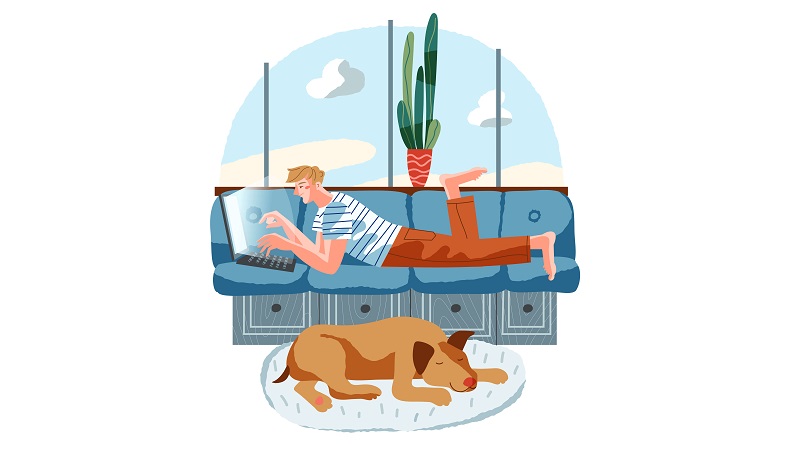
Table of Contents
The freelancing industry is booming, and there’s no sign of it slowing down. More and more people are choosing to freelance and ditch the traditional workforce in favor of a more flexible schedule and lifestyle. But what is freelancing really like? Is it all it’s cracked up to be? In this blog post, we’ll take a closer look at all the aspects of this new movement that is shaking up the work world.
You may have heard about doing freelance work on the beach. Or edited photos of exhausted 9-5 employees vs pleased freelancers working from home may have inspired you to risk your current job. Well, I know how frustrating job life can sometimes be as well! (fool) But don’t worry; there are downsides no matter which direction your career takes. Freelancing can be the light to your bright future. On the other hand, it also can not be suiting your goals. By the end of this guide, You’ll completely know what’s waiting for you in becoming a freelancer.
What is freelancing and how have we been brought here over the years?
To understand this, we must first know how freelancing started in the first place.
The term “freelance” was first used in Sir Walter Scott’s Ivanhoe in 1820 to describe a mercenary warrior who didn’t serve anyone lord but fought for whoever would pay him. The word has since evolved to mean anyone who works for themselves instead of an employer. And with the rise of the internet, freelancing has become more common than ever before.
When most people think of freelancing, they think of writers or graphic designers working from home in their pajamas. While it’s true that freelancers often have the flexibility to set their own hours and work from home, there’s much more to freelancing than that. A freelancer is simply someone who is self-employed and not tied to a single employer. This can include everything from business consultants and web developers to event planners and salespeople. In fact, there are freelancers in nearly every industry imaginable. While some freelancers are sole proprietors, others work for agencies or companies that specialize in freelance talent. And while some freelancers prefer the freedom of working independently, others enjoy the camaraderie of collaborating with other freelancers on projects. No matter what your skills or preferences are, there’s a good chance you could find success as a freelancer.
There are many reasons to start freelancing from the beginning, quitting your 9-5 to freelance, or even choosing it as a second job! But the most important reasons seem to be the following:
- Technology has made it easier than ever to connect with clients and find work online. You can now apply for jobs, communicate with clients, and get paid all without ever leaving your home.
- Freelancing has become popular as a more flexible way to work. Freelancers can often set their own hours and work from anywhere in the world. This is a great option for people who need or want to travel or those who have other commitments outside of work.
- Even for people working on the clock freelancing can be a great way to make extra money. With the rise of the gig economy, there are now more opportunities than ever to pick up odd jobs and make some extra cash. Whether you’re looking to supplement your income or earn a living freelancing full-time, there are plenty of options out there.
14 Freelancing Fields
| Category | Freelancers |
When it comes to business, the importance of design and creativity should never be underestimated. A well-designed logo, for instance, can make all the difference in helping a company to stand out from its competitors. |
|
With the rise of digital marketing and subcategories like SEO writing and content services are more important than ever. Businesses need to be able to produce high-quality content in order to stay competitive. |
|
In today’s global economy, businesses need to be able to communicate with customers and clients all around the world. While English is the language of business, many potential customers and clients do not speak English as their first language. As a result, businesses need to use translation services in order to reach untapped markets and communicate effectively. |
|
In today’s business scene, an online presence is essential. And one of the best ways to create an engaging, visually appealing one is through high-quality photography, video, and animation services. |
|
No business is an island, and in today’s economy, that means having a strong web presence is more important than ever. For businesses, large and small, a freelance programmer can provide the necessary expertise to get up and running online. |
|
Sales and marketing are two of the most important functions in any business. After all, without customers, there would be no need for businesses to exist in the first place. |
| Industry | Freelance Job Opportunities |
Data science services can help businesses to extract valuable insights from their data, which can then be used to improve decision-making and grow the business. |
|
As businesses become increasingly global and fast-paced, they need freelance professionals who can help them with a variety of tasks, from data entry to administrative work. |
|
Engineering and natural science help to improve the efficiency of businesses, and they also help to improve the quality of products and services. |
|
With the help of sound, music, and narration, businesses can more effectively convey their brand identity and values. |
|
Business and consulting services can help you in a number of ways, from identifying new opportunities for growth to streamlining your operations. |
|
In today’s fast-paced world, it can be hard to find time for the things that matter most to us. That’s where freelance lifestyle services come in. They can play a vital role in helping us grow and improve our lives. |
4 Questions to Ask Yourself Before Turning to Freelancing
When you’re ready to start freelancing, it’s important that your mind is clear. You should do some stretches before starting. So, you will be mentally and physically prepared for what comes next!
What’s your purpose for freelancing?
Whether you’re looking for more flexibility, or simply trying to escape your daily commute and find some peace in life; if freelancing is what tickles your fancy then don’t let anyone tell you otherwise. However, getting out of one’s comfort zone is not that simple. First, you have to ask yourself what your goal for freelancing is. This way, you can answer anyone and mostly your present and future self confidently about your career choice and job outlook.
- Do you want to get rich fast by freelancing?
- Do you think freelance work is the other side of having a schedule?
- Do you want to start freelancing to get rid of working with other people like your colleagues and your boss?
If your answer is positive to any of these questions let’s be honest with each other. Freelancing is not gonna work for you. Becoming a freelancer will not reach you anywhere good if you are not serious enough. Like any other job, being successful in freelancing requires hard work, commitment, and the ability to connect and work with other people. Let’s take a look at some examples based on real freelancers’ stories.
-Gerard had been freelancing for 6 months, and it had been a bit of a roller coaster ride. He’d had some good days where he’d made a lot of money, but he’d also had some bad days where he barely broke even. Overall, Gerard was happy with the freedom that freelance work offered him, though. It was nice being his own boss and setting his own hours.
-Suzi has been a freelancer for over 2 years and has learned a lot about its ups and downs. She’s dealt with all sorts of clients, from the easy ones to the hard ones. There were times when she went long periods without any projects, making it difficult to afford living expenses. But through it all, Suzi has persevered. She knew that freelancing is a tough business, but the rewards are worth it. And now, she’s finally landed her dream project. It’s everything she ever wanted and more.
Can you afford the living when there’s no project for you?
Freelance careers offer a higher salary and unlimited potential. As the one deciding what they make, you could be sitting on top of an ocean with all those zeros after it!
But don’t get your hopes up just yet. When you first start freelancing, it can be tough.
Are you bound to the job security of a 9-5 job? I know, but you have to forget about job security in freelancing. Why? You’re actually considered self-employed when you enter the freelancing field; so, you’re actually a business owner without the rights of a typical 9-5 employee. You might have to sacrifice income while setting up your business and establishing yourself as an expert in the field of work that interests you most, so, there will be tough days without any jobs or income. But don’t worry! It takes time before the fruits start manifesting themselves and being paid well for what you do best.
Do you have enough self-esteem to confront unexpected projects and clients?
What if you’re not sure what’s coming next? That sounds pretty tough, doesn’t it? Honestly, I can understand why some people might find freelancing intimidating because of all these factors: unexpected projects and clients. Honestly, if you’re stuck in your comfort zone and it sounds hard for you to deal with unexpected projects and clients, freelancing is not for you. On the other hand, if you’re ready to upgrade your self-esteem and start confronting unexpected experiences, why not give it a shot?
-I was always a shy student in school. I had a lot of talents and passions, but I never felt confident enough to share them with anyone. When I graduated and started working in an office, I realized that it wasn’t the right fit for me. I was too anti-social and talented for that type of job. So, I decided to start freelancing.
At first, communicating with clients was really hard for me. I didn’t know how to show off my skills and get the project that I wanted. But then, I decided to take things one step further. I started networking with other professionals in my field, and soon my business took off! Now, I’m a successful freelancer and I love my job.
What’s your best talent that brings you joy?
Freelancing is a great way to make money while doing something you love. It can be tough to find your niche, but freelancing offers the opportunity to explore different talents and skills until you find the perfect fit. Once you’ve found your talent, it’s important to focus on freelancing gigs that bring you joy. Don’t forget to focus on your main strengths and top skills to be able to present yourself as an expert in your field. After all, freelancing should be about more than just making money, it should be about brightening your future and pursuing your passions. So if you’re ready to start freelancing, the first step is finding your best talent; the one that brings you joy. Then, let the spark of freelancing shine!
Pros & Cons of Freelancing
Pros
1. Ability to work from anywhere
More and more people are seeking the flexibility and freedom that comes with working remotely in recent years. Freelancers have the ability to work from anywhere in the world, which means that they can choose to live and work in a wide variety of locations. On the other hand, freelancers are not limited to job opportunities only in their own city or even country. There’s no need to immigrate to other cities or countries for job opportunities anymore. at this point, nothing matters but your skills and abilities. Freelancing is the way down to go!
2. Freelancers often make more money than in traditional jobs
Freelancers often make more money than they would in traditional jobs. This is because freelancers are usually paid per project, so they can make a lot more money if they’re good at what they do. Freelancers also have the potential to make more money because they’re not limited by geographical boundaries. They can work with clients from all over the world, which means that they have a lot more opportunities to make money. Finally, freelancers don’t have to worry about benefits like health insurance or vacation time, which can save them a lot of money. All in all, freelancing is a great way to make more money than you would in a traditional job.
3. Control over one’s schedule
One of the appeals is that freelancers have control over their schedules. That means they can take on work when it’s convenient for them and, theoretically, leave more time for personal pursuits. But freelancing also comes with its own set of challenges, including the need to be self-motivated and organized. Those who are successful at freelancing typically have a good balance between work and personal life. They’re able to set their own hours, but they also know when to put in the extra time to get a project done. For many freelancers, having control over their schedule is the key to a successful career.
4. Saving time and energy by working from home
Freelancing has become increasingly popular in recent years, as more and more people are looking for ways to save time and energy by working from home. Freelancing offers the opportunity to work remotely, which can be a great way to save on commuting costs and time. In addition, freelancing gives you the flexibility to work around your personal schedule, which can be a huge benefit if you have family or other commitments. While freelancing isn’t for everyone, it can be a great way to save time and energy if you’re able to make it work for you.
5. No age and academic education limit
Whether you’re a high-school dropout or college grad, if your passion is learning and doing something about it then this opportunity will be perfect for YOU! You can learn how to become an expert in any field by taking self-study courses. Then when we say “start freelancing,” that’s exactly what they mean; there are no limitations on where/when people start getting paid thanksgiving dollars from clients as long as their legal working age range allows them to:)
(Suggested blog: Education of freelancers)
6. More creativity by doing what you find enjoyable
A freelancing system can lead to greater creativity, as freelancers are more likely to enjoy their work and be more productive when they’re doing something they’re interested in. Freelancers are often more creative because freelancers are not limited by creativity-killing bureaucracy, and freelancers have the freedom to try new things and take risks. In addition, freelancing can give remote workers a chance to work on multiple projects at once, which can help freelancers to come up with more creative solutions. In conclusion, freelancing can help freelancers to be more creative by allowing them to explore their interests and take on new projects.
7. Be your own boss
Freelancing is a great way to be your own boss. You can work on a contract basis for companies or individuals, setting your own hours and rates. The problem with toxic bosses is that they’re draining you of your passion. When someone micromanages every detail, it can be exhausting to focus on anything but their instructions for how things need to be done; even if those tasks don’t interest or excite them! What’s more frustrating than being told what project needs to be completed next? Nothing really…
Cons
1. Working long hours to make a good income
Some people love the freedom and flexibility that comes with being your own boss, while others find the lack of structure to be overwhelming. One of the biggest cons of freelancing is the long hours that are often required to make a good income. When you’re first starting out, it can be tough to find enough work to keep you busy, which can lead to long days and late nights spent working. And even when you do have steady work, you often have to put in extra hours to meet deadlines or get ahead of the competition. If you’re not careful, freelancing can easily become a full-time job – without the benefits or stability that come with traditional employment.
2. Having difficulty finding consistent work
One of the big cons is that it can be difficult to find consistent work. Sure, there might be a few big projects here and there, but for the most part, you’re always on the lookout for new clients. And even when you do find consistent work, it’s often not as steady as you’d like it to be, which can make it tough to budget and plan for the future. So if you’re thinking of freelancing, just know that you might have to put in a lot of extra effort to find (and keep) consistent work.
3. Strict clients
While freelancing certainly has its perks, it’s not all rainbows and butterflies. One of the cons of freelancing is having to deal with difficult clients. When you’re working for someone else, they’re usually pretty clear about what they want. But when you’re freelancing, you often have to rely on the client to give you a clear idea of what they’re looking for. And sometimes, clients can be really strict about what they want. They might be picky about the details or have a specific taste that’s hard to please. As a result, freelancing can be quite difficult at times.
4. You may not be interested in some projects
One of the cons of freelancing is that you may not be interested in some projects. There’s always that one project that’s so uncool or uninteresting, but you have to do it because it pays the bills. It’s a necessary evil of freelancing, and you just have to grin and bear it. This can be frustrating when you see other freelancers working on cooler or more interesting projects, but remember that they probably have different bills to pay than you do. In the end, it all evens out and you’ll get your chance to work on the projects you love. So hang in there and don’t give up on your freelancing career just because of a few uncool projects.
As with anything, there are pros and cons to freelancing. It’s important to weigh these carefully before deciding if freelancing is right for you.
How to Start Freelancing?
We know there are a lot of questions and concerns about starting your own freelance career. But we’re here to help answer them all! Join us as we cover everything from branding yourself, finding clients (and how much they pay!), and managing money wisely when you’re working alone or part-time.
The following sections deal with various aspects related to becoming a freelancer:
Stage 1: Strategies to get started
Set your goals
When you are starting your own business, it can be hard to know what direction the best fit for yourself is. But before diving into completing jobs or making money as a freelancer, you should set up some basic guidelines that’ll help both attract clients but also provide an escape route when things get tough (which happens). When you’re your own boss, it’s easy to get sidetracked and push off important projects. Set goals for yourself and make sure you’re always moving forward.
Create a work routine
Just because you’re not working in an office doesn’t mean you can lounge around in your PJs all day. Create a work routine for yourself and stick to it. This will help you stay focused and productive.
Create your portfolio
The most important way to build your brand is to create a professional portfolio. There are a number of portfolio design websites and software programs that you can use to create a polished and professional-looking portfolio. By taking the time to create a portfolio that showcases your work in the best possible light, you will be able to attract more clients and grow your freelance business.
Build your personal brand
If you’re thinking about freelancing, the first (and most important) thing you need to do is build a personal brand. It may seem like a lot of work, but trust me, it’s worth it. When you build a strong personal brand, you become much more than just a freelancer; you become an authoritative figure in your industry, with a loyal following of clients and fans.
To start building this amazing project called “Your Personal Brand” (or “your brand”), here is everything you need to know:
1. Get a logo, ’cause why not?
A well-designed logo can help you to communicate your brand message and make a lasting impression on potential clients. When selecting a logo, consider choosing an icon that represents what you do or what you stand for. You can design your logo with AAA Logo, Logosmartz, LaughingBird, Inkscape, Summitsoft, etc. or you can hire a freelance logo designer to design your logo in the most professional way.
2. Don’t be shy. Choose the business name after yours.
One of the best ways to build your personal brand is to choose a business name that includes your own name. By doing this, you’ll make it easy for potential clients to find you online and get an idea of the kinds of services you offer. And since your name is likely to be unique, it will help you stand out from the crowd of other freelancers who are competing for clients. Of course, there are other ways to build your personal brand as a freelancer, but choosing a business name that includes your own name is a great place to start.
3. Have a remarkable online presence.
Having a strong online presence is one of the great ways to build personal brands. Your website and social media accounts are key components of your online identity, so make sure they’re up to date and professional. Showcase your work, highlight your skills and achievements, and be active in relevant online communities. This way, you’ll create a strong personal brand that will help you attract clients and grow your freelancing business.
4. Similar website domain, social media, email, etc. name
Try your best to have a consistent name across all of your online platforms; your website, your social media accounts, your email address, and so on. This makes it easier for potential clients to find you and know who you are, which in turn makes it more likely that they’ll want to hire you. So if you’re serious about freelancing, make sure you choose a name that you can stick with – and then make sure it’s prominently displayed on all of your online channels. Your future clients will thank you for it.
5. Professional-designed website
As a freelancer, one of the best ways you can set yourself apart from the competition is by having a professional-designed website. Your website is a reflection of your brand, and it should be designed with intention and purpose. By working with a web designer who understands your vision and goals, you can create a website that not only looks great, but also reinforces your personal brand, work samples, and portfolio to attract new clients. In today’s competitive marketplace, standing out from the crowd is essential to success, and a professional-designed website is one of the best ways to do that. So if you’re serious about building your personal brand as a freelancer, hire a web development expert. It’ll be worth every penny.
6. Optimized usage of social media
You can build your personal brand as a freelancer by having an optimized usage of social media. Every platform has its own benefits and purpose, so being in all of them is the key!
Instead, focus on building up different ones for specific tasks like Twitter where it’s best used just sharing work or connecting with clients through LinkedIn. Facebook can also help find groups who have similar interests which could lead them into becoming potential future customers. Instagram may come in handy when trying out visual forms such as photography/design.
7. Business card
One of the simplest and most effective ways to do that is to have a business card. A business card is not only a great way to make a good first impression, but it’s also a valuable tool for networking and marketing yourself. When you hand out your card, you’re essentially saying, “Here’s my contact info. Hire me, please. You won’t regret it!”
Stage 2: Business establishing
Business registration
Establishing your business is the second stage of starting freelancing. The first step is to register your business. It is important that you establish your business before starting freelancing. This will make sure that you are organized and have all of your paperwork in order. When you register your business, you will need to choose a name for your business, as well as a logo and slogan. You will also need to choose a business structure, such as a sole proprietorship, partnership, or corporation.
Setting up workspace
Establishing your freelancing business can be done by setting up your workspace and making sure you have all the tools you need to succeed. There are a ton of great online tools out there to help freelancers with everything from time management to invoicing. Find the ones that work best for you and your freelancing business. Once you have your workspace set up, you can start marketing yourself to potential clients.
5 Best time tracking apps for freelancers
| Name | Features | Free access | Cost to upgrade |
| Toggl |
|
✅ |
|
| Traqq |
|
✅ (3 seat max) |
|
| Clockify |
Timetracker Kiosk Apps Timesheet Calendar Integrations
Dashboard Activity Reports Projects
Team Time off Expenses Scheduling Approval Invoicing |
✅ |
$ 3.99 USD per user/month billed annually (or $4.99 if billed monthly)
$ 5.49 USD per user/month billed annually (or $6.99 if billed monthly)
$ 7.99 USD per user/month billed annually (or $9.99 if billed monthly)
$ 11.99 USD per user/month billed annually (or $14.99 if billed monthly) |
| Harvest |
Track time from the browser, desktop, and mobile Integrated with your workflow Custom reminders for consistent time tracking
Keep budgets on target Visualize team capacity Understand costs Analyze time spent Dive into the details Do more with your data
Streamline your invoicing Get paid fast with online payments Keep your books up to date |
✅ (1 seat, 2 projects) |
Pro: $12
Unlimited seats Unlimited projects |
| RescueTime |
|
✅ |
|
Stage 3: Setting rates
It can be tricky to set rates as a freelancer. You want to make sure you’re charging enough to make a good living, but you also don’t want to scare clients away with high prices. So how do you find the right balance? This guide will walk you through the basics of setting rates as a freelancer, based on your skills and experience. There are different types of price settings. We’ll dive into tips to set rates and different kinds of freelance rate settings. Let’s get started!
Market rate pricing
As a freelancer, one of the most important things you can do is to set your rates based on the market you’re working in. This means that you analyze rates for your particular skill set in your area. Also, checking the average rates of other freelancers in your market can give you a great leader. While it may be tempting to lowball your rates in order to win a project, this can actually end up costing you more in the long run.
Value-based pricing
One option to set freelance rates is the value-based pricing model, where you charge based on the value that you provide to the client. This can be a great option if you’re confident in your abilities and want to price your services according to their worth. For example, when a freelance web developer designs a simple website for a small business, he/she adds a typical range of value to the client. On the other hand, when a freelance mobile application developer designs an app for a business with already more than 50,000 users and clients and 2000 future estimated users, the pricing of the project will be more. Whatever pricing model you choose, make sure that you’re comfortable with it and that it allows you to earn a fair wage for your work.
Hourly pricing
For freelance rates, hourly pricing is the way to go. It’s simple, it’s straightforward, and it’s easy to understand. As a freelancer, you’re in control of your own rates, so you can set them according to your desired level of pay. And when it comes to freelance work, hourly pricing is the most common method used. Here’s a look at the conditions hourly pricing works and how you can use it to set your freelance rates.
- When there’s room to add to the details of the project.
- When the project can be started in a second and get done speedily.
- When we’re free to change the scope of the project.
If you’re doing something like writing or programming services, hourly rates may be more appropriate.
Project-based pricing
One way to approach freelance pricing is to think in terms of projects, rather than hourly rates. This way, you can better assess the scope of work and the value of your services. For example, rather than charging $50 per hour for your services, you might instead charge $500 for a project that will take 10 hours to complete. This project-based approach can help you to better communicate your rates to potential clients and ensure that you’re getting paid what you’re worth. This kind of pricing is also called cost-plus pricing (considering 10-30% as profit). Following are project features that fit project-based pricing.
- When the scope, deliveries, and deadline of the project are fixed.
- When the cost of the project is defined exactly.
As for what kind of projects are best suited for project-based pricing, it really depends on the nature of the work. For example, if you’re doing design work, it may make more sense to charge by the project rather than by the hour.
Finding Jobs and Clients as a Freelancer
Freelancing platforms
As a freelancer, one of the most important things you can do is to build up a strong network of clients. While there are many ways to find potential clients, one of the best methods is to use freelancing platforms. These platforms provide a great way to connect with clients who are looking for specific projects. In addition, they also allow you to bid on projects and get your name out there. Of course, building up a strong network takes time and effort, but it’s worth it in the long run. After all, as a freelancer, your livelihood depends on finding clients and getting projects. So if you’re serious about freelancing, make sure to put in the work to find the right clients for you.
Following are some freelancing platforms to find freelance jobs in.
Perfectlancer
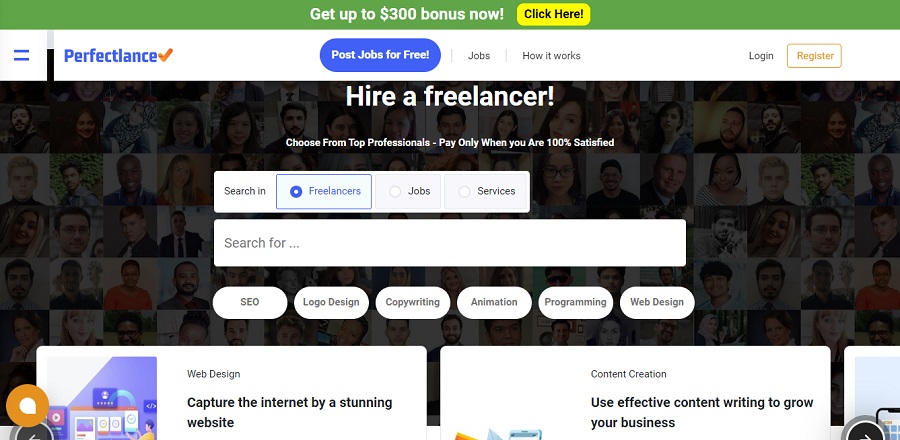
Guru

Upwork

PeoplePerHour
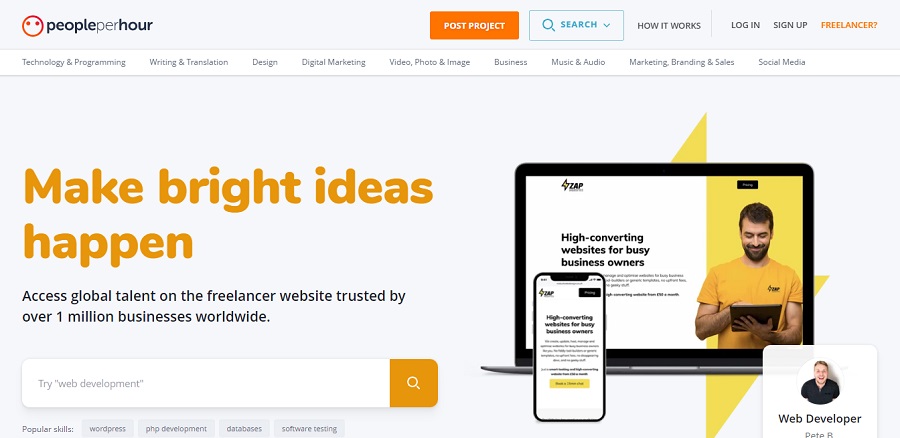
Fiverr
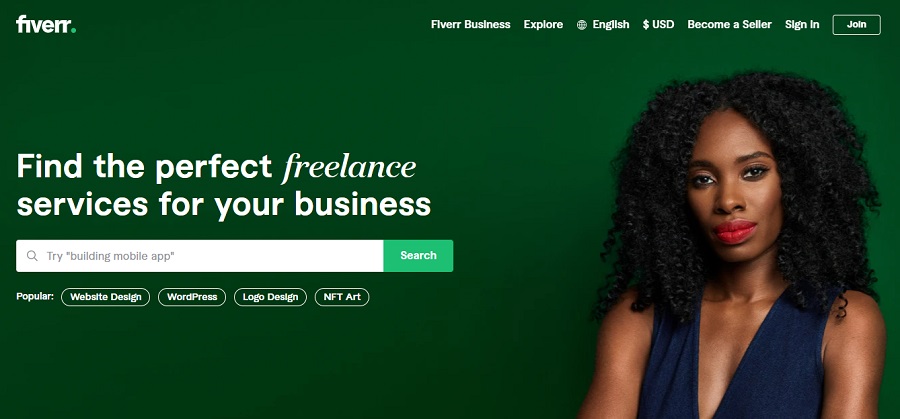
SimplyHired
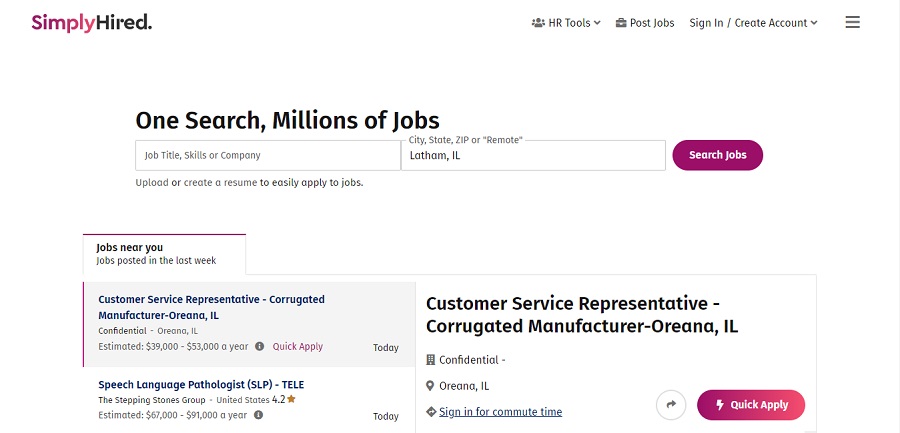
99design (especially for graphic designers)
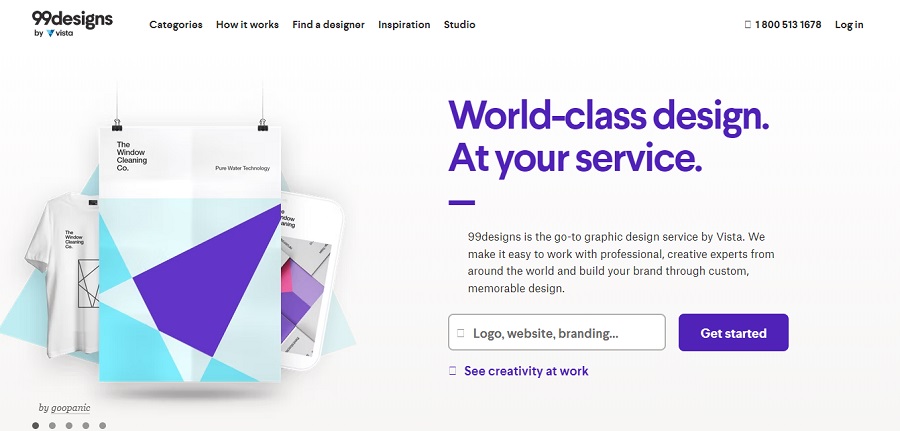
Freelancer communities
One of the best ways to find other freelancers is through online communities. There are a number of forums and websites dedicated to freelancers, where you can post questions, share advice, and find collaborators for projects. These communities can be a great way to connect with other freelancers from around the world and learn about new opportunities.
If you’re looking for more face-to-face interaction, there are also a number of local freelancer communities you can join. These typically meet on a regular basis and provide an opportunity to network with other freelancers in your area. You can also attend local events such as trade shows and conferences – these often have a large freelance presence and can be great places to meet new people and learn about new opportunities.
Some freelancing communities to join and communicate with co-workers are:
Discord


One Woman Shop

Freelancer’s Union
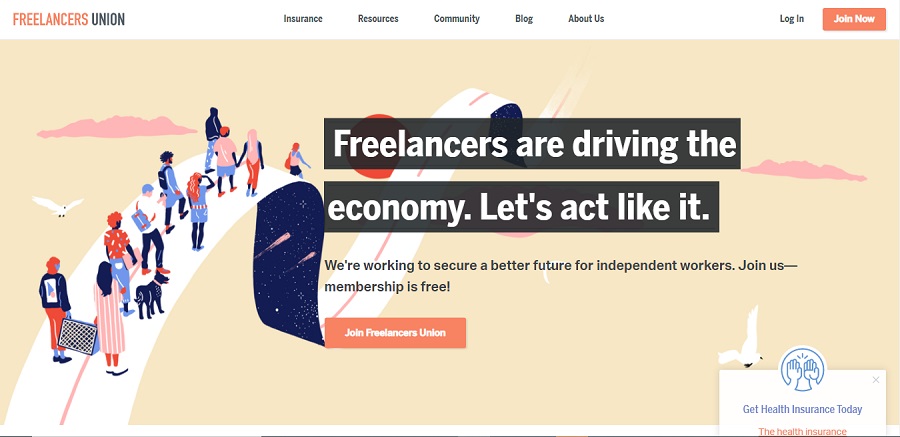

Slack



Strong network
Finding freelancing jobs can be a struggle. One way to get a freelancing job is to build a strong network with co-workers and potential clients. Also informing friends and family about your career helps a lot. This way, you’ll be able to build long-term relationships that can lead to freelancing opportunities. So if you’re looking for freelancing jobs, don’t forget to network! It’s the best way to find clients and gigs.
Underpriced rate (for starters)
One way to get around this is to start off by underpricing your services. This may seem counterintuitive but bear with me. By undercharging for your services in the beginning, you’ll be able to build up a portfolio of happy clients who are more likely to recommend you to others. Once you have a few good clients under your belt, you can start charging more for your services. And since you already have a track record of producing quality work, you’ll be in a good position to negotiate higher rates. So if you’re struggling to find freelancing jobs, remember that sometimes it pays to underprice yourself in the beginning.
Rates, referrals, and testimonials
It can be a bit of a struggle to find freelance jobs, but one way to get a freelancing job is to have high-rated rates, testimonials, and referrals from people you have worked with Or you have not. Asking for more reviews causes more authority in your freelancing field. If you are already freelancing, consider whether or not you could ask your clients or individuals that you have worked with in the past for a freelancing review, testimonial, or referral. If you don’t have any reviews, testimonials, or referrals, start by looking online for some that others have given. Finally, consider ways in which you could improve your freelancing business so that you are more likely to receive positive reviews, testimonials, and referrals from clients and individuals in the future.
Managing freelance projects and workspace
When you’re a freelancer, it’s important to be organized and have a plan. You need to know what projects you’re working on, what your deadlines are, and where everything is. This will help you stay organized and on track. Here are some tips for managing freelance projects and workspace. This way, you prove to your clients that you’re organized and have a special approach.
First, create a project management spreadsheet with all of your project details and every other task and event.
Second, use a dedicated workspace and project management tool/tools to keep all of your materials together.
And finally, set deadlines for yourself and stick to them! Having a schedule will help you stay on track and avoid procrastination. These tips will help you stay productive as a freelancer!
5 best project management tools
| Tools | Features | Available for free? | Pricing |
| Kissflow Project |
|
✅ |
|
| Trello |
|
✅ |
|
| Asana |
|
✅ |
|
| Zoho Projects |
|
✅ |
|
| Wrike |
|
✅ |
|
Is freelancing considered a business? Financials and Taxes
As a freelancer, you’re used to juggling and adapting when it comes to your work. But there’s always the main question; is freelancing considered a business? what about taxes and financials? Here are some tips to help make the process a little easier.
For the freelance life, there are a few financial things you should know. For starters, since you’re considered self-employed, you’re responsible for paying your own taxes due to being considered a business owner. That means setting aside money every month to make sure you have enough come tax time. So, yes! Freelancing is one’s personal business. And speaking of tax time, you’ll also need to file a separate tax return for your freelance business. This can seem daunting, but there are plenty of online resources to calculate self-employed tax and even software to help make it easier.
In addition to taxes, freelancers also need to keep track of their freelance income and expenses. This is important not only for tax purposes but also to get an idea of whether your freelance business is actually making money. Luckily, there are also plenty of tools to help with this as well. So if you’re thinking about going freelance, be sure to do your research on the financial side of things first. Following are some financial management tools for freelancers to get the most out of.
Mint

FreshBooks

Invoice2Go
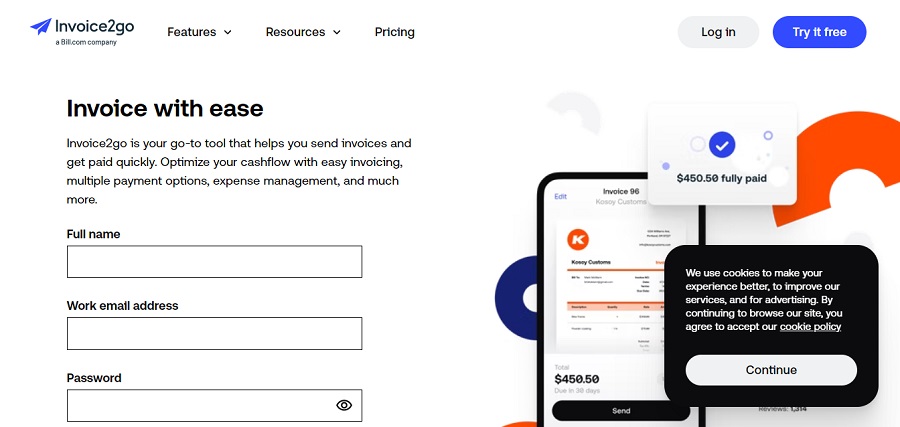
Wave

Toshl Finance
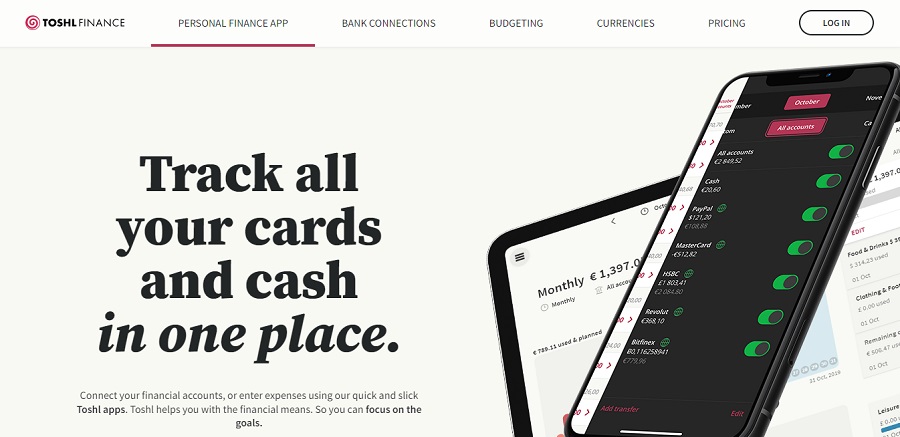
Personal Capital
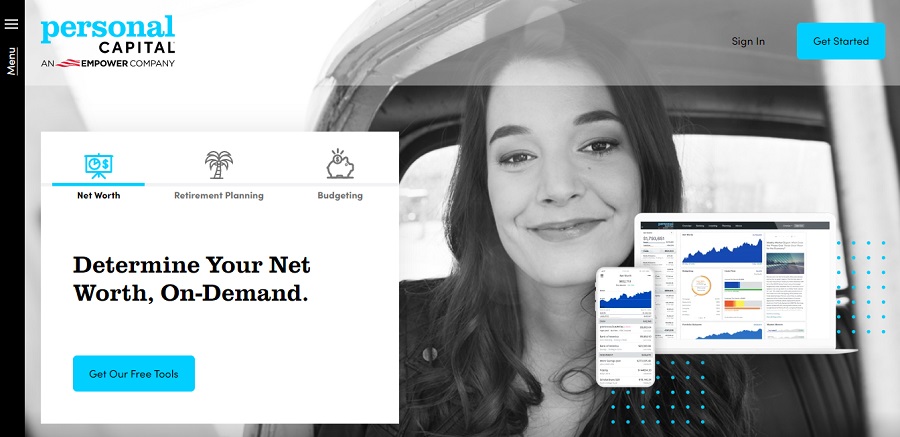
Honeydue
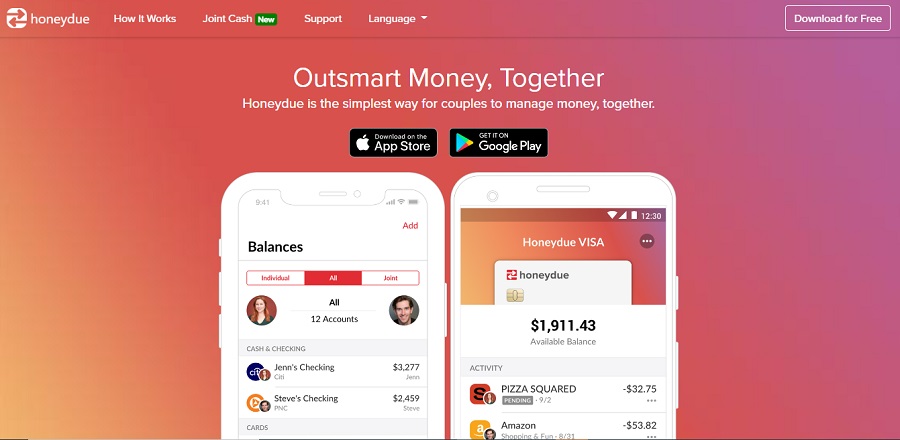
The more you earn as a freelancer, the trickier it becomes to keep track of your income. You might have plenty of 1099-NEC forms from each client that pays out an amount over $600. All these clients report this payout on taxes going forward but what about all those other smaller payments? Freelancers receive 1099-K from payments through online payment services. The IRS will also send these reports over with information about how much was earned so we know where our next paycheck should come from!
Is freelancing worth it?
This is a common question that comes to mind especially when you’re really considering freelancing as a career in 2022. The number of freelancers is increasing But the question is… is it happening for a reason?
Freelancing has been on the rise in recent years, as more and more people are choosing to take control of their careers and work on their own terms. But with so many freelancers now competing for jobs, is freelancing really a viable long-term career option? The answer may surprise you.
Despite the increasing number of freelancers, the demand for freelancers is actually outpacing the supply. This is due to the fact that freelancing offers many advantages over traditional employment, such as greater flexibility, increased autonomy, and the ability to work from anywhere in the world. As a result, freelancers are in high demand, and their job outlook is very positive.
So if you’re thinking about becoming a freelancer, don’t let concerns about job security hold you back. Freelancing is a thriving industry with a bright future, and there’s never been a better time to start your freelancing career.
Last Words
So, there you have it. Everything you need to know about freelancing; the good, the bad, and everything in between. We hope this article has helped clear up some of the questions you may have had about freelancing, and that you feel confident enough to start your own freelance career today. Just remember, like with anything else in life, there are pros and cons to freelancing, so make sure you weigh them all up before making a decision. And most importantly, enjoy it! Freelancing can be a lot of fun if you let it be, so go out there and make the most of your newfound freedom. Thanks for reading!


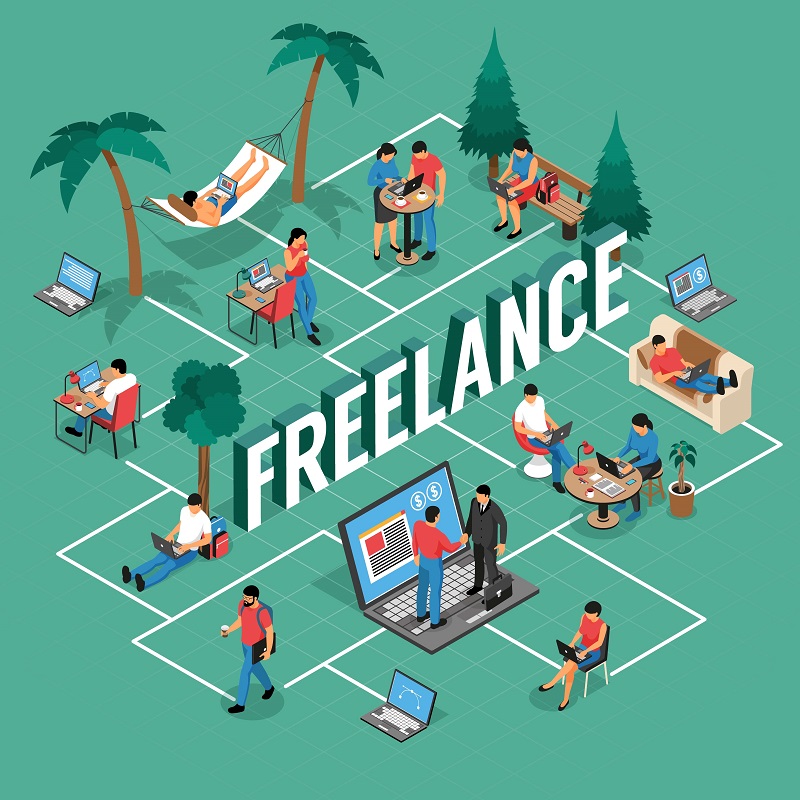








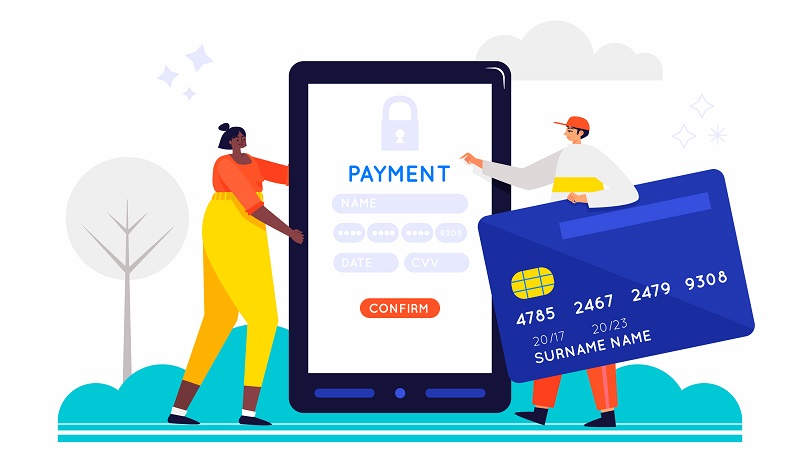
I am not really fantastic with English but I find this real easygoing to interpret.